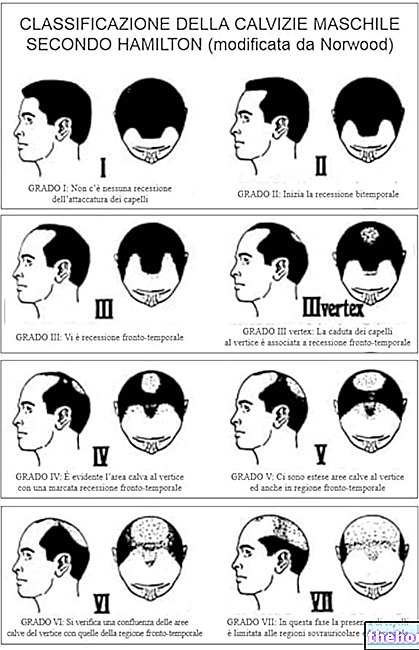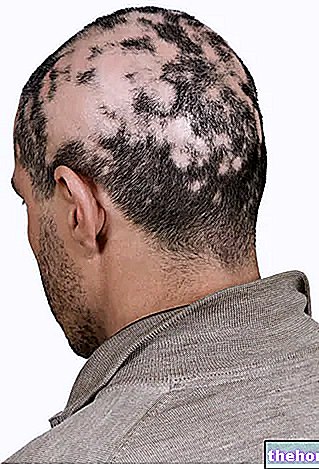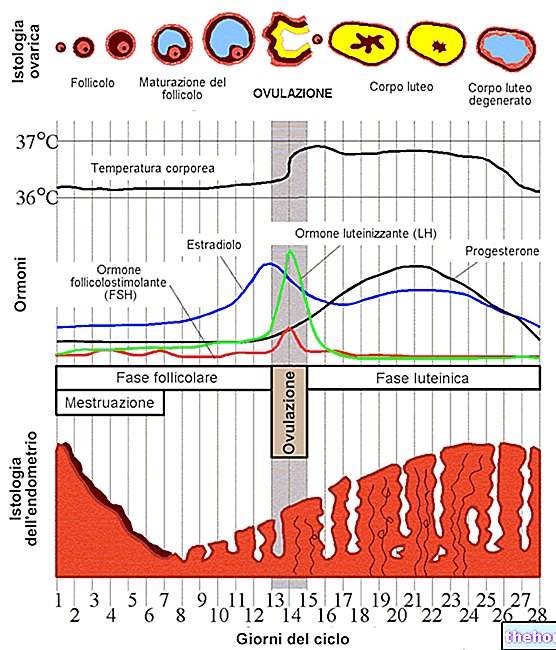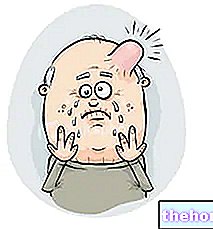Sex hormones and GH heavily affect the growth of our hair. In particular, their evolution from pixie to terminal hair is regulated by the "somatotropic hormone (GH), while the involution depends on the" activity of androgens. In man, in particular the hair of the vertex and frontal areas be more sensitive to the action of androgens, while in women this sensitivity is more widespread.

Testosterone is the androgen hormone par excellence, secreted by the testicles and to a lesser extent by the adrenal gland; the latter also produces other types of androgens, such as androstenedione, dehydroepiandrosterone (DHEA) and androstenediol (in women there is a very small synthesis of androgens also ovarian level). Once in the target organs, these hormones can be metabolized to testosterone, which in turn undergoes the action of the enzyme 5-α-reductase transforming itself into dihydrotestosterone. Conversely, all androgens, including testosterone, can also be transformed into estrogens (typically female sex hormones) by the intervention of the aromatase enzyme.
While estrogens have a positive effect on hair (proliferative signal), testosterone, and in particular its metabolite dihydrotestosterone, play a crucial role in the thinning process (antiproliferative signal).
The real active androgen at the level of the hair matrix and capilliphere is therefore dihydrotestosterone. To this hormone we owe both the growth of sexual hair on the face, chest, back and shoulders, and the loss of hair in subjects and in predisposed areas. It is therefore not surprising that the 5-α-reductase activity - which is owes the aforementioned conversion of testosterone to dihydrotestosterone - it is particularly marked in the frontal region of bald subjects.
Dihydrosterone binds to a specific cytoplasmic receptor of a protein nature; the complex thus formed migrates to the nucleus, where it binds to specific receptors, regulating protein synthesis. In particular, at the hair level, the binding to nuclear receptors activates the transcription processes with synthesis of messenger RNA, which at the ribosomal level represses (in predisposed subjects) the synthesis of structural proteins of hair and hair.
For what has been said, the higher the quantity of androgens circulating and the greater the possibility that - in the face of a genetic predisposition - there is an early hair loss. At this point it should be pointed out that androgens circulate in the blood bound to plasma proteins such as albumin and SHBG, and that only the free fraction, therefore separated from this bond, is biologically active. Consequently, in the blood testosterone dosage, from a clinical point of view it is more important to evaluate the free fraction than the total quantity.
SHBG, to which testosterone binds tenaciously, increases its concentration in relation to the increase (physiological, pathological or iatrogenic) of estrogens and thyroid hormones. On the other hand, SHBG levels decrease in response to the increase in plasma androgens ; in this case, there is an increase in the free fraction of testosterone. Consequently, the 5-α-reductase enzymes will have more substrate (free testosterone) available for the synthesis of dihydrotestorene.
IN DEFINITIVELY, IN ORDER "ANDROGENETIC ALOPECIA (responsible for most cases of baldness) HAPPENS, THERE MUST BE A PREPARATION ON A GENETIC BASIS, WHICH NEEDS A HIGHER OR LOWER LEVEL OF ANDROGENS TO REALIZE.
If it is true that in the absence of androgens baldness does not manifest itself, the hormonal values of the bald are generally comparable to those of the general population. Only in women with androgenetic alopecia is it not uncommon to find androgenic levels above normal.
Probably, pituitary hormones such as the aforementioned GH and prolactin, can regulate the degree of activity of the 5-α-reductase enzyme; just think of the pubertal acne that afflicts young people of particularly tall stature (sign of GH hypersecretion) or to outflow (hair loss) and seborrhea in amenorrhoeic or hyperprolactinemic women.
Currently, the drug most used in the treatment of male androgenetic alopecia is finasteride, a synthetic 5-α-reductase inhibitor.

















.jpg)










